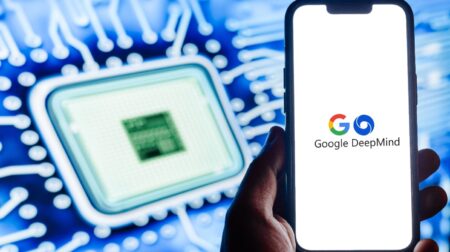Researchers at the University of Bristol have reported a major breakthrough in the building and development of robotic hands.
The group, led by Professor Nathan Lepora, is developing a tactile robot hand.
The four-fingered machine has been observed rotating balls and other objects in all directions, with this improvement in dexterity signalling that the technology could be ready for the next stage of testing.
Teams from the Massachusetts Institute of Technology, the University of California in Berkeley, Columbia University in New York also supported the development, with the four working in tandem for the past year.
More demanding dexterity tests could include assembling Lego to further develop the hand’s capabilities.
The teams hope the robot will be used to automate handling applications, such as food items for supermarkets or sorting waste to be recycled.
After OpenAI showcased an advanced robotic hand in 2019, the team at Bristol hoped to replicate the model’s success using less expensive equipment and research procedures.
All the involved teams have been developing the hand’s dexterity using simple set-ups and desktop computers.
As outlined in a recent Science Robotics article: “The future lies in a pair of tactile hands”, an advancement that was achieved by all teams building in a sense of touch into their robot hands.
One of the reasons attributed to the teams; success was the advancement of smartphone cameras, which are now small enough to comfortably fit inside a robot fingertip.
“In Bristol, our artificial tactile fingertip uses a 3D-printed mesh of pin-like papillae on the underside of the skin, based on copying the internal structure of human skin,” Professor Lepora added.
“These papillae are made on advanced 3D-printers that can mix soft and hard materials to create complicated structures like those found in biology.
“The first time this worked on a robot hand upside-down was hugely exciting as no-one had done this before. Initially the robot would drop the object, but we found the right way to train the hand using tactile data and it suddenly worked even when the hand was being waved around on a robotic arm.”
Professor Lepora’s research was funded by the Leverhulme Trust Research Leadership Award.








